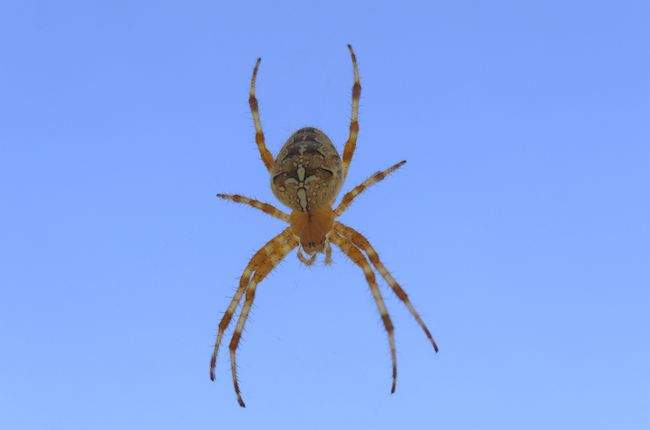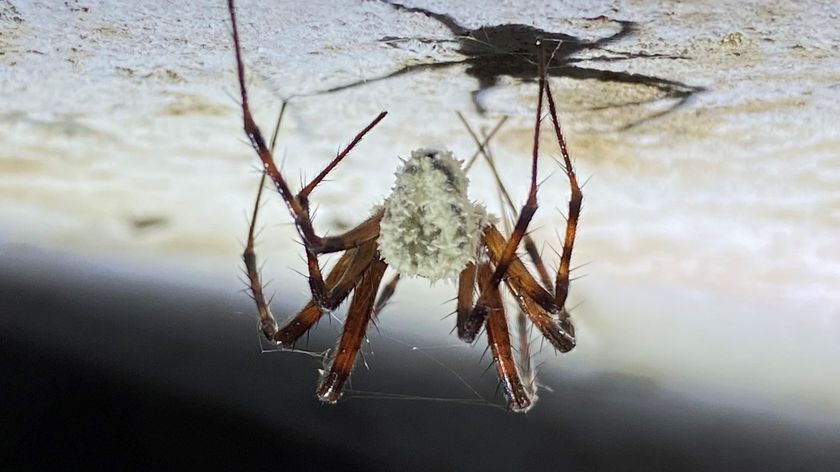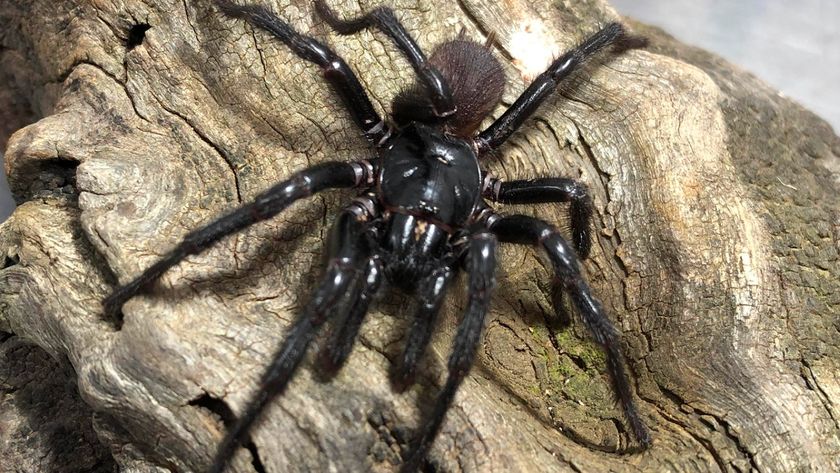Cloudy with a Chance of Arachnids? 'Spider Rain' Explained

Millions of tiny spiders recently fell from the sky in Australia, alarming residents whose properties were suddenly covered with not only the creepy critters, but also mounds of their silky threads. But that's not where the frightful news ends: Experts say that such arachnid rains aren't as uncommon as you might think.
This month's spider downpour in the country's Southern Tablelands region is just the most recent example of a phenomenon commonly known as "spider rain" or, in some circles, "angel hair," because of the silky, hairlike threads the spiders leave behind. Ian Watson, who lives in the region affected by the spooky shower, took to Facebook to describe what this strange "weather" looks like, according to the Goulburn Post.
"Anyone else experiencing this "Angel Hair" or maybe aka millions of spiders falling from the sky right now? I'm 10 minutes out of town, and you can clearly see hundreds of little spiders floating along with their webs and my home is covered in them. Someone call a scientist!” Watson wrote on the Goulburn Community Forum Facebook page. [Fishy Rain to Fire Whirlwinds: The World's Weirdest Weather]
So, here at Live Science, call a scientist (or two) is exactly what we did. Rick Vetter, a retired arachnologist at the University of California, Riverside, said Watson and his neighbors likely saw a form of spider transportation known as ballooning.
"Ballooning is a not-uncommon behavior of many spiders. They climb some high area and stick their butts up in the air and release silk. Then they just take off," Vetter told Live Science. "This is going on all around us all the time. We just don't notice it."
The reason people don't usually notice this ingenious spider behavior is that it's not common for millions of spiders to do this at the same time, and then land in the same place, said Todd Blackledge, a biology professor at the University of Akron in Ohio.
"In these kinds of events [spider rains], what's thought to be going on is that there's a whole cohort of spiders that's ready to do this ballooning dispersal behavior, but for whatever reason, the weather conditions haven't been optimal and allowed them to do that. But then the weather changes, and they have the proper conditions to balloon, and they all start to do it," Blackledge told Live Science.
Sign up for the Live Science daily newsletter now
Get the world’s most fascinating discoveries delivered straight to your inbox.
This is likely what happened in New South Wales, where certain species of small spiders — as well as the tiny hatchlings of larger spider species— are known to balloon around the Outback during late autumn (May) and early spring (August). But, as Blackledge explained, an abrupt change in the weather or wind pattern may have carried these migrating spiders up and away and then back down to earth en mass — not the orderly dispersal that they (or the residents of the Southern Tablelands region) were expecting.
For the startled citizens of Goulburn and surrounding areas, however, the tiny spiders raining down from the sky probably pose no threat to humans, both Blackledge and Vetter said.
"There's a tiny, tiny number of species that have venom that's actually dangerous to people. And even then, if these are juvenile spiders, they're going to be too small to even bite, in all likelihood," Blackledge said.
However, such a huge group of spiders could damage crops, which might become so enshrouded in silk that they don't get enough sunlight, Vetter said.
Watson (the Goulburn resident who recommended that someone call a scientist) noted that tiny spiders have a way of becoming entangled in human facial hair.
"You couldn't go out without getting spider webs on you. And I've got a beard as well, so they kept getting in my beard," Watson told Yahoo News.
Follow Elizabeth Palermo @techEpalermo. Follow Live Science @livescience, Facebook & Google+. Original article on Live Science.

Elizabeth is a former Live Science associate editor and current director of audience development at the Chamber of Commerce. She graduated with a bachelor of arts degree from George Washington University. Elizabeth has traveled throughout the Americas, studying political systems and indigenous cultures and teaching English to students of all ages.


